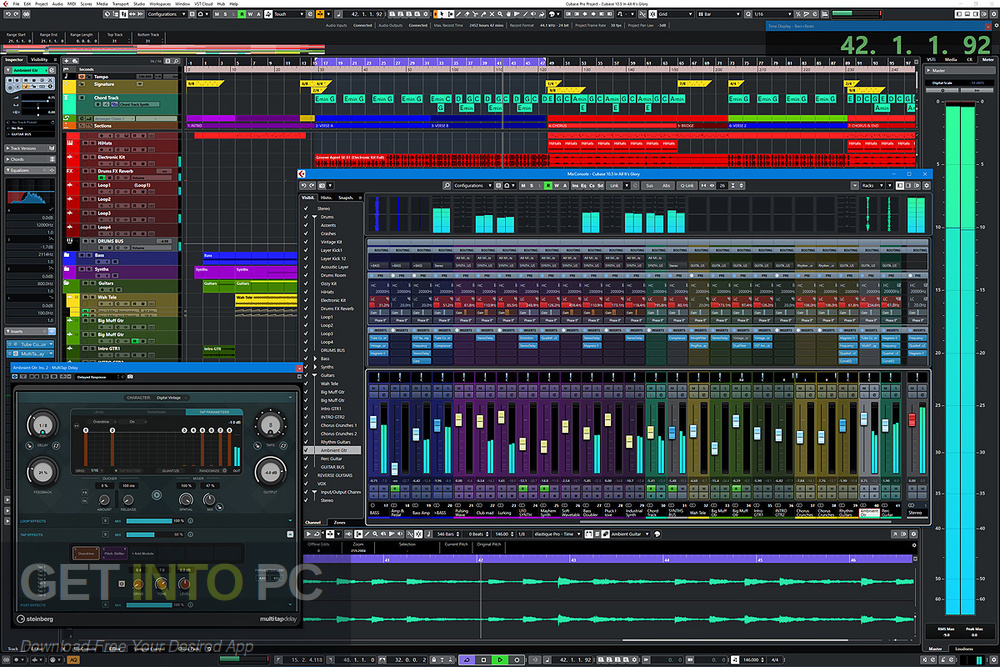

One improvement to what is now called the Right Zone is that it can be made much narrower than before. When you click the Setup Window Layout button, you’ll notice the Inspector and Racks sections have been renamed Left Zone and Right Zone respectively, and the button itself is now part of a group of Window Zone Controls that provides dedicated buttons to hide and show the Left and Right Zones on the toolbar. I find it slightly odd Steinberg decided to move this to the opposite side of the window from where it was previously located - the visibility buttons have been on the left-hand side of the window for nearly 15 years - but there we are. The Right section provides a new home for the Setup Window Layout button, where you can specify what parts of the user interface are displayed in the Project window from a pop-up. The left section contains the Project History buttons for undo and redo, which I’m sure I will never click, and, inexplicably and optionally, the Constrain Delay Compensation button. The toolbar is now split into three sections, with new left and right sections (justified left and right accordingly) joining the original toolbar controls. It’s basically the same Project window as before, but with a few immediately apparent changes: the core toolbar functionality is now centred rather than left-aligned, and a new Transport Zone (the same height as the toolbar) has been added to the lowest part of the window. RezoningĪfter installing and launching Cubase 9, I felt a little discombobulated when the Project window appeared for the first time. This is in keeping with the icon for Steinberg’s recently released Dorico scoring application, and actually stands out a little better on my cluttered desktop. The familiar diamond and circle on a transparent background is now a less tinted red on a white background, with app-like rounded corners. The first major change to note is that Steinberg have redesigned the Cubase icon.
Cubase 9 pro tutorial full#
For a full comparison of what features are available in the different flavours of Cubase, including the Elements version, refer to Steinberg’s web site. To make things easy, I’ll refer simply to Cubase 9 when discussing matters applicable to both Pro and Artist, and state Cubase Pro 9 when describing features only available in this version.
Cubase 9 pro tutorial upgrade#
Either way, this will be a welcome step for Artist users, who no longer have to wait for the upgrade to become available after the Pro release. Given that the installer is the same for Pro and Artist, I assume they might now just be the same application, with the licence on your Steinberg Key dictating whether the Pro or Artist functionality should be enabled. And, for the first time, new versions of Cubase Pro and Cubase Artist were released simultaneously, along with the entry-level Cubase Elements.

Released on December 7th, Cubase 9 introduces new ways of working, new tools and many improvements.
Cubase 9 pro tutorial update#
The latest update to Cubase sees Steinberg’s DAW embrace single-window working and integrated sampling.įor the fourth year in a row, Steinberg have delivered a major update to Cubase.


 0 kommentar(er)
0 kommentar(er)
